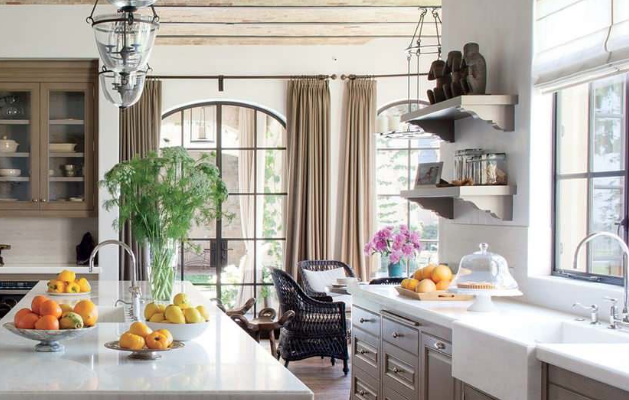SketchUp is a powerful modelling application that offers far more than the mix of features that are found in the conventional software that has been widely used for over two decades.

The application is designed to be highly flexible so that you can design anything from a small battery to a full city block without having to swap between different programs. When you can design everything in one place, you can afford to invest more into automating and optimizing your workflow to get more work done.
Given the broad range of tools that SketchUp includes, putting together a comprehensive list of all the application’s features would be impossible. Nevertheless, in this SketchUp guide, we managed to pick the top 10 techniques for using the functions and add-ons that make SketchUp one of the best modeling tools available. We have touched on a broad range of issues that are suitable for both basic users and advanced professionals. Let us know on social media how we did on this SketchUp tutorial so that we can continue to give you the best content possible!
1. Use Groups and Components to Organize Your Work
Many beginners struggle to use SketchUp because they fail to make effective use of groups and components when they first start. Groups and components are tools that let you edit subsections of your model without having to worry about messing up its overall structure. You can, then, use the SketchUp app to make modifications like you would if you were duplicating objects to avoid impacting the original model with potentially erroneous changes. The best part about SketchUp is that once you are satisfied with your work, you can also use groups and components to modify all copies of an element at the same time.
2. Make Use of SketchUp’s Object Library
Modeling software typically offers powerful tools, but it generally fails to include a library of base content to help you get started. Thankfully, SketchUp has added a robust warehouse of content that you can download from the internet. The library continues to grow as both SketchUp’s developers and members of the developer community add more objects. Some of the objects that exist include characters, shrubs, couches, and other everyday items. The objects are, of course, available for unrestricted use, and you can modify them completely.
3. Include Imagery from Google
One of the little-known facts about SketchUp is that Google purchased it over a decade ago in 2006. At the time, Google was investing heavily in satellite imagery since it knew that mapping software would have a massive impact on the future. When you use SketchUp, you can take advantage of all the functionality that Google built to import satellite maps and three-dimensional objects from Google Earth. Since content from Google Earth can be used with no copyright restrictions, this library can function as a logical starting point for advanced projects.
4. Make Use of the Follow-Me Tool
Creating advanced spheres is ordinarily difficult, but SketchUp makes creating these objects as easy as possible. All you must do is create two circles that intersect before turning one of the rings on its central axis to create a perfectly spherical object. To confirm your work, you can even use the SketchUp protractor tool to ensure that everything lines up with exact precision. Learning how to use the follow-me tool effectively can cut hours of modeling work down to just a few minutes.
5. Use Soap Skin and Bubble
One of the best add-ons for SketchUp is Soap Skin and Bubble. The plugin lets you turn flat surfaces into a mesh, but it also comes with a particular function that enables you to expand one side as if you are inflating a balloon. You can, then, inflate or deflate the object to create complex structures that can make your model look outstanding.
6. Take Advantage of Textures and Material Properties
SketchUp comes with a robust texture editor that lets you easily modify and create new textures without switching to different applications. Additionally, you can also edit material properties using SketchUp to make sure the planning of your textures look right from different angles and in high-contrast settings. The application even includes access to a free material library that offers metals, plastics, stone, and other common materials.
7. Explore Presentation Features
Professionals often use SketchUp for its unique animation features that are easy to use. However, the animation features are so usable that many architects and other designers use SketchUp to create interactive presentations that let clients quickly flip through sections of a model to make sense of it. You can, for instance, create an animation that pans the camera from one floor to the next inside a building that you are designing.
8. Take Advantage of Rendering Software
Although SketchUp lets you use expensive rendering tools from leading vendors, there are also several high-quality rendering tools that you do not have to pay for. You can, for instance, use Indigo Renderer as an alternative to 3DS Max or V-Ray. If the cost of rendering software is holding you back from starting to use SketchUp, make sure that you give SketchUp’s free rendering tools a try to see if they will work in your situation.
9. Organize Your Toolbar Effectively
You will get the most out of SketchUp’s available functionality when you stay highly organized. To use the hundreds of add-ons that it takes to speed up your workflow, take the time to learn how to use SketchUp’s “hide” and “selection” tools. Thereby, you can download every plugin you want without having to worry about turning your toolbar into a cluttered mess.
10. Learn More on the SketchUcation Forums
In this SketchUp guide, we were only able to cover 10 of the many essential tips. If you want to learn more, you can visit the SketchUcation forms to read high-quality posts and SketchUp tutorials from both experts and beginners. By learning from the community, you can quickly get up to speed on all SketchUp’s functionality so that you can start building the models of your dreams.







